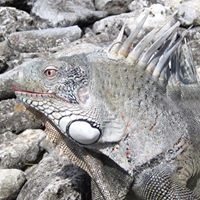Which of these birds is in the picture?
The oystercatchers are a group of waders forming the family 'Haematopodidae', which has a single genus, 'Haematopus'. They are found on coasts worldwide apart from the polar regions and some tropical regions of Africa and South-East Asia.
The name oystercatcher was coined by Mark Catesby in 1731 as a common name for the North American species H. palliatus, described as eating oysters.
The different species of oystercatcher show little variation in shape or appearance. They range from 39–50 cm (15–20 in) in length and 72–91 cm (28–36 in) in wingspan. The Eurasian oystercatcher is the lightest on average, at 526 g (1.160 lb), while the sooty oystercatcher is the heaviest, at 819 g (1.806 lb).
The plumage of all species is either all-black, or black (or dark brown) on top and white underneath. The variable oystercatcher is slightly exceptional in being either all-black or pied. They are large, obvious, and noisy plover-like birds, with massive long orange or red bills used for smashing or prying open molluscs. The bill shape varies between species, according to the diet. Those birds with blade-like bill tips pry open or smash mollusc shells, and those with pointed bill tips tend to probe for annelid worms. They show sexual dimorphism, with females being longer-billed and heavier than males.
The diet of oystercatchers varies with location. Species occurring inland feed upon earthworms and insect larvae.
More Info:
en.wikipedia.org








